Today we get our first glimpse of Metonga coming in from the “Railway station”, “on the county road”. If you recall from our history lesson, Forest County is less than two-years-old at the time of this article, so one does have to wonder what route the author is referring to. There are two possibilities: North Crandon Railway and/or the Pelican Railway.
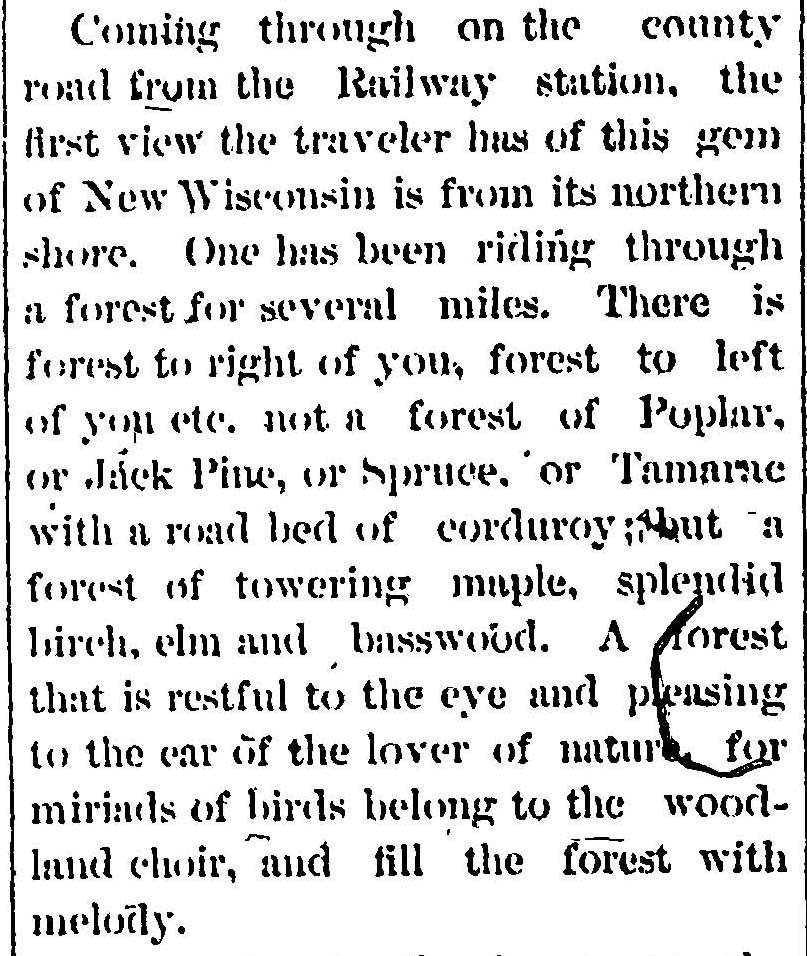
North Crandon Railway station and County Highway
As I began researching the early routes in Forest County, I discovered a map from the National Archives at Chicago that I obtained a few years back. The map is part of the National Archives Microfilm Publication M1126, Post Office Department Records of Site Locations, 1837-1950 (683 rolls) and details the location of the Crandon Post Office, a county highway, and the Saint Paul, Sault Ste. Marie and Atlantic Railroad station located in North Crandon.
The document provides a location for the Crandon Post Office in section 29 with the highway to the railroad station located along the section lines headed north, and turning east essentially where Hwy 32 runs North in Argonne today.
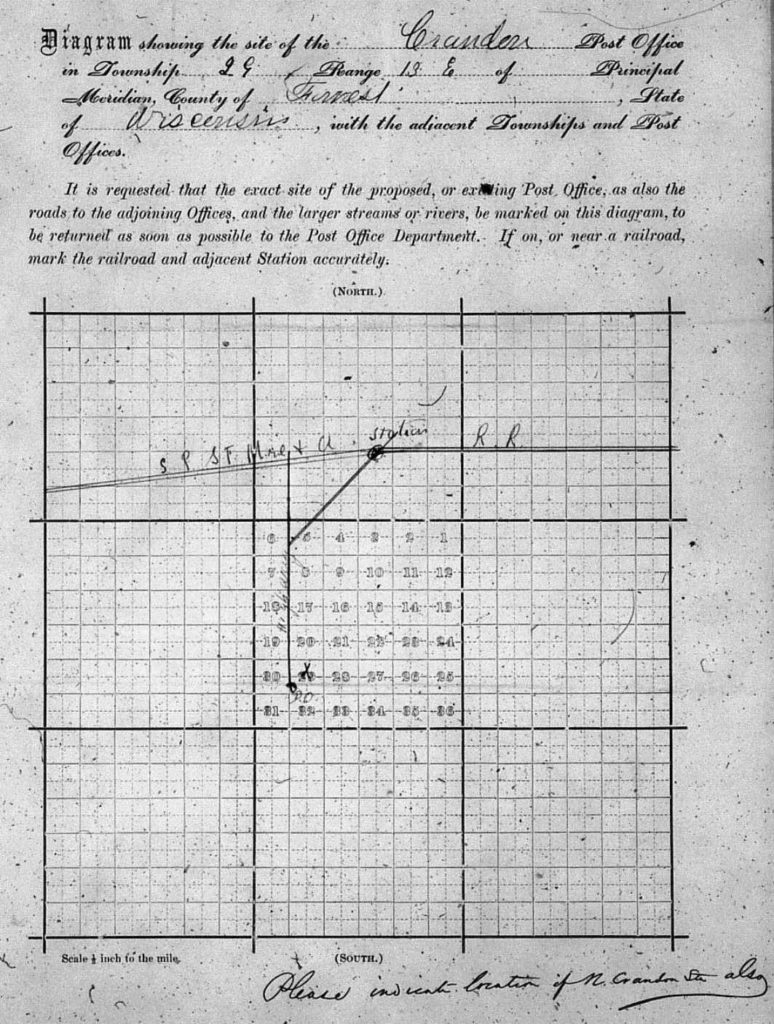
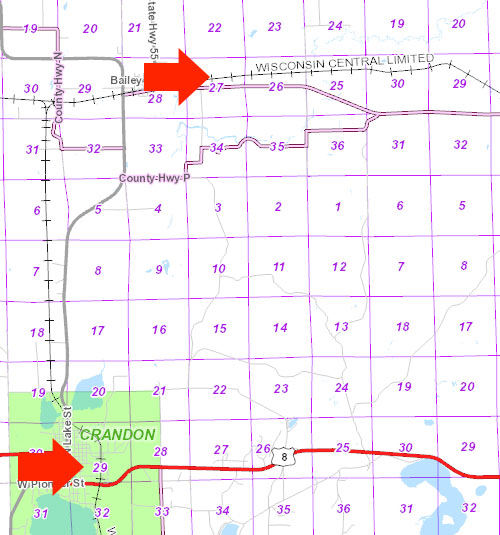
County Road from Pelican to Crandon
While the post office map does offer an explanation of a possible route to catch a glimpse of Lake Metonga, there is also another route that existed at the time of the article and that is the route from Pelican to Crandon via the Lake Shore railroad. This route can be seen on the 1888 Map of Forest County that currently hangs in the County Register of Deeds office.
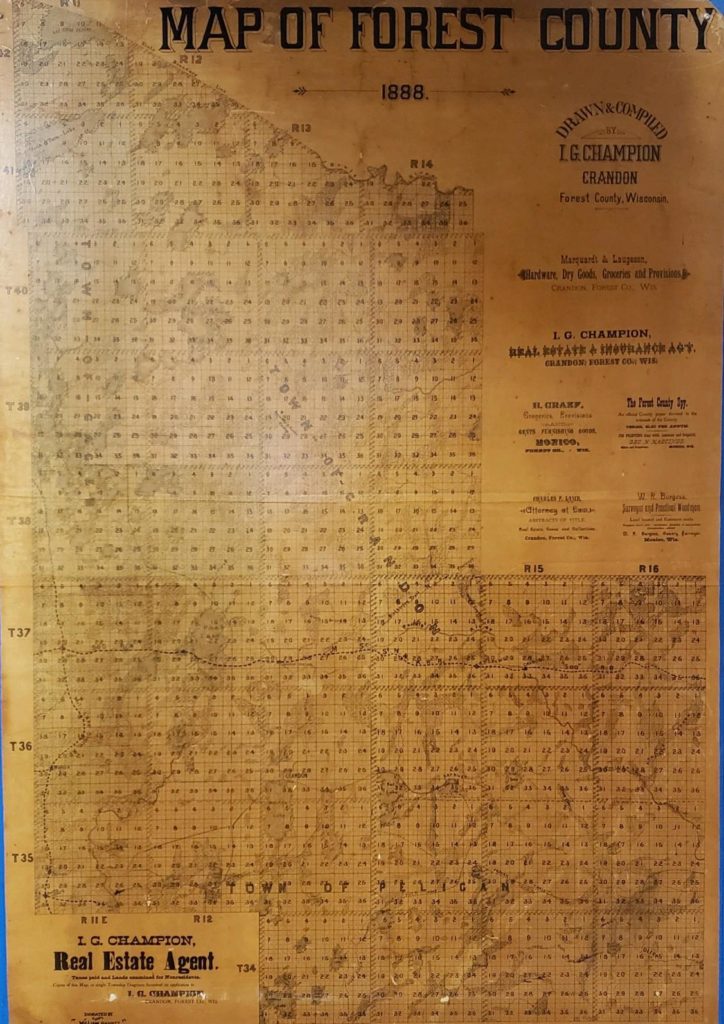
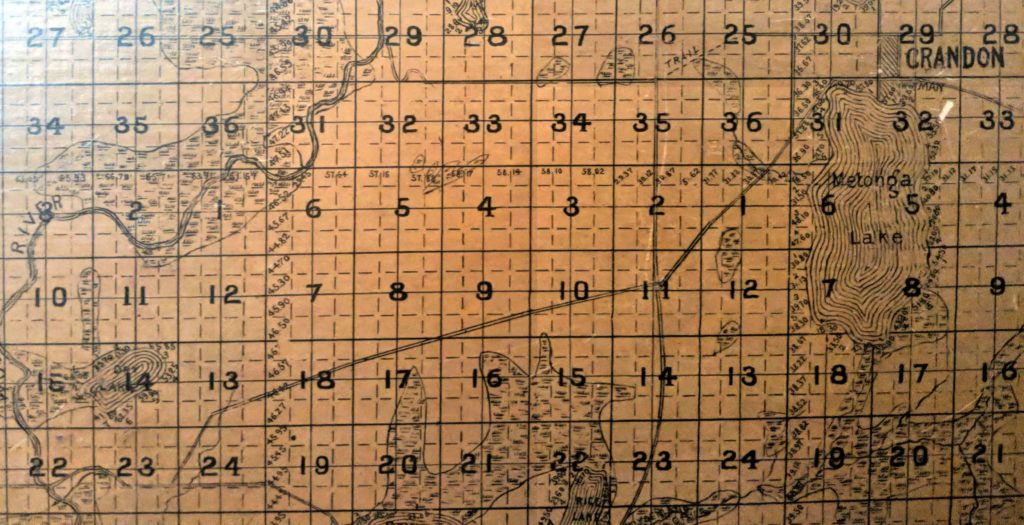
Essentially the County Road in 1888 is Highway 55 out of Crandon. The split at Hwy B is visible on both maps with the original county road being further south than Hwy B.
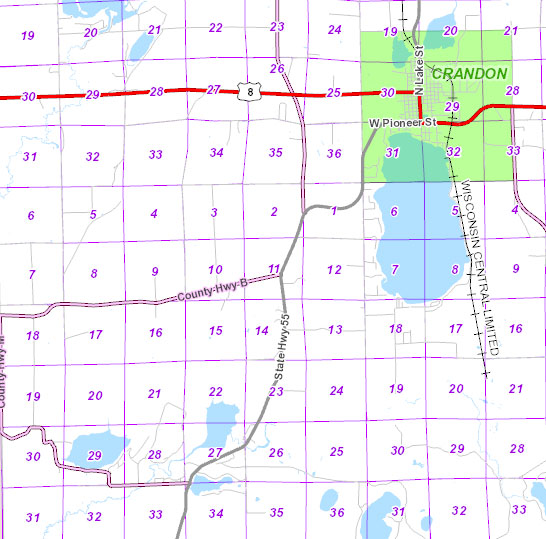
According to the March 1887 newspaper article, a traveler taking the county road to the Northern Shore of Metonga would have ridden through a forest for several miles. “There is forest to the right of you, forest to left of you etc, not a forest of Poplar, or Jack Pine, or Spruce, or Tamarac with a road bed of corduroy but a forest of towering maple, splendid birch, elm and basswood.”
This route, along with the description of the forest, is detailed in a January 1912 article titled “A Glimpse of the Past” in the Wisconsin Presbyterian. The article, written by Rev. James S. Wilson, offers the reader a wonderful account of Rev. Wilson’s trip from Pelican to Crandon.
“I was told to take the Lake Shore railroad to Pelican, and then take the stage. I did so, left Pelican at ten a.m., rode all day and part of the night, made one involuntary disembarkment, and at last, wet, muddy and hungry, reached Samual Shaw’s log house, which was then the center of activities. We passed two houses on the journey, at one of which we had a good meal, and that day I made my first acquaintance with two luxuries of the virgin country—wild rice and venison. On the next day, September 15, 1886, I held my first service in Forest County, in a little log building which stood on the banks of beautiful Metonga, then unscathed by the woodman’s axe”
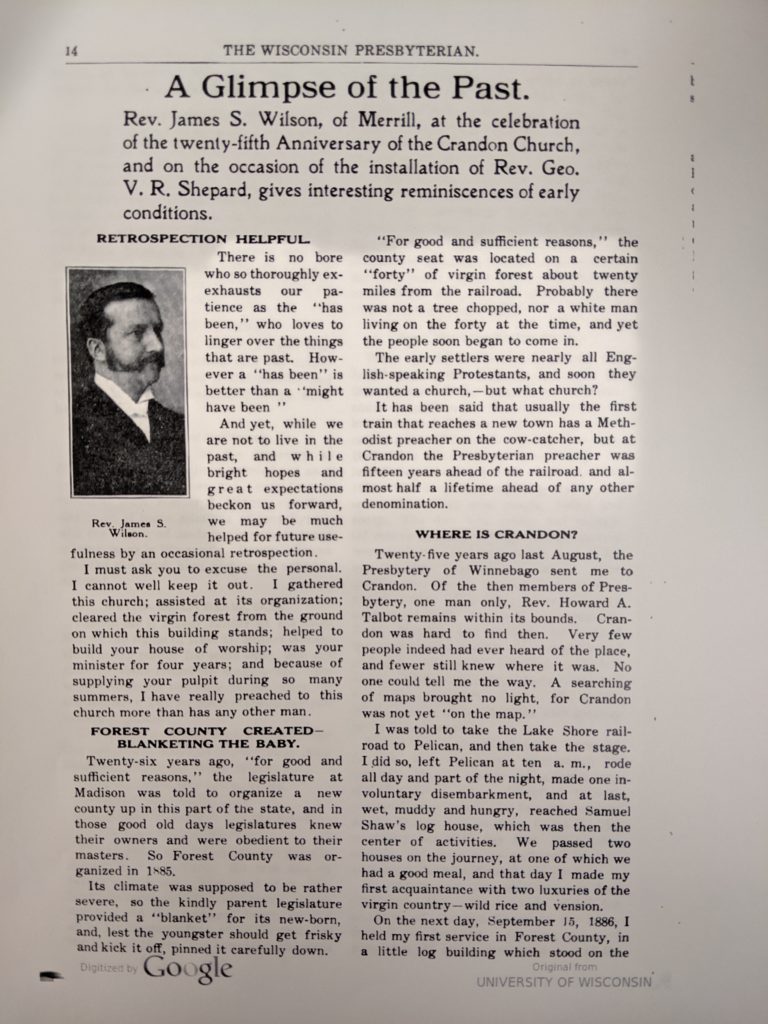
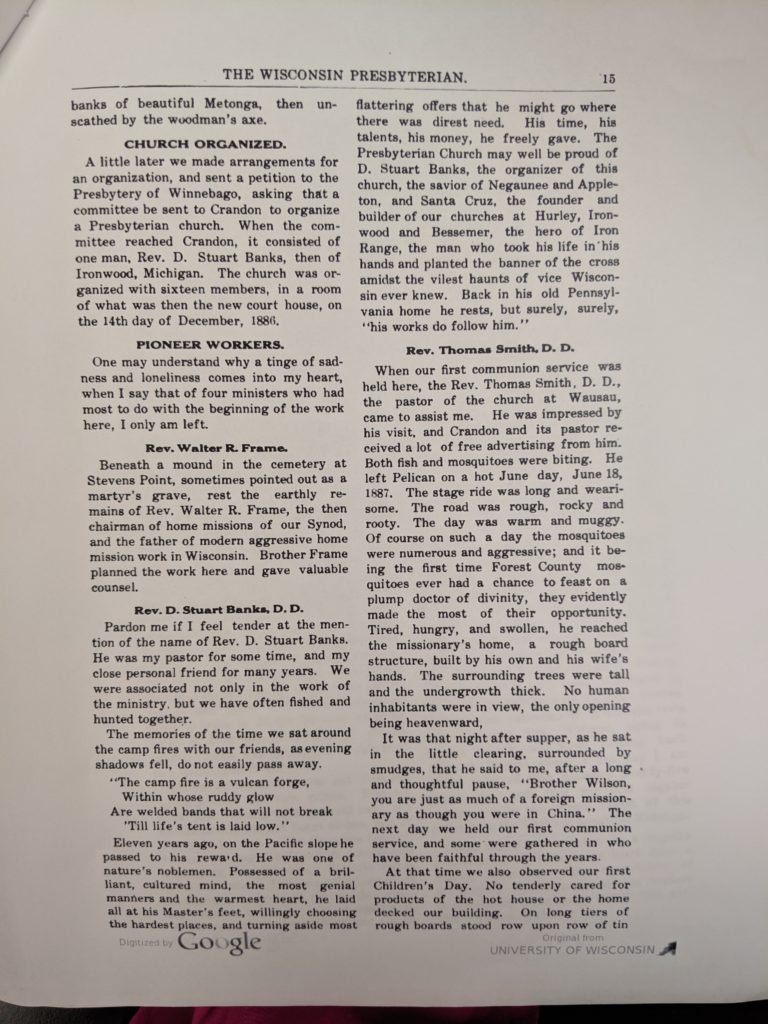
Rev. Wilson once again confirmed this route when he wrote a letter to Mrs. F.J. Davis in May of 1923. Mrs. Davis, a high school teacher at the time, was conducting a history lesson for Crandon High School students and had written to early pioneers of Crandon asking for their memories of early Crandon. These letters were transcribed by Historical Society members Winnie Krueger a few years ago.
Mrs. F.J. Davis, Crandon, Wis. May 15th 1923
Dear Vina, I have your letter of recent date asking for some data of the early days of Crandon. I have few records, and did not then have a Kodak, so will have to depend on memory, but I remember the events of those early day better than those of later years. I first went to Crandon in August 1886, rode on the stage from Pelican Lake to Crandon, leaving Pelican about 10:00 AM and reaching Crandon at 8:30 PM. – rained all the way. Had dinner at Beaudettes, – wild rice & venison- I held my first service the next day in the Little Log school house, which stood in what is now Harry Keith’s lawn. It was a beautiful Sunday A.M. We came ? boat from Mrs. Shaw’s Metonga’s banks were then unscathed by the woodman’s ax.
Not only does this letter confirm the route from Pelican to Metonga, it also details the location of the little log school house on the banks of Metonga as “what is now Harry Keith’s lawn”. Today, we know Harry Keith’s lawn as “The Bungalow.”
And here is our first glimpse of Metonga!
Next week we will move on in our story and learn about the opening of Lake Avenue south to Metonga, Have a great week!
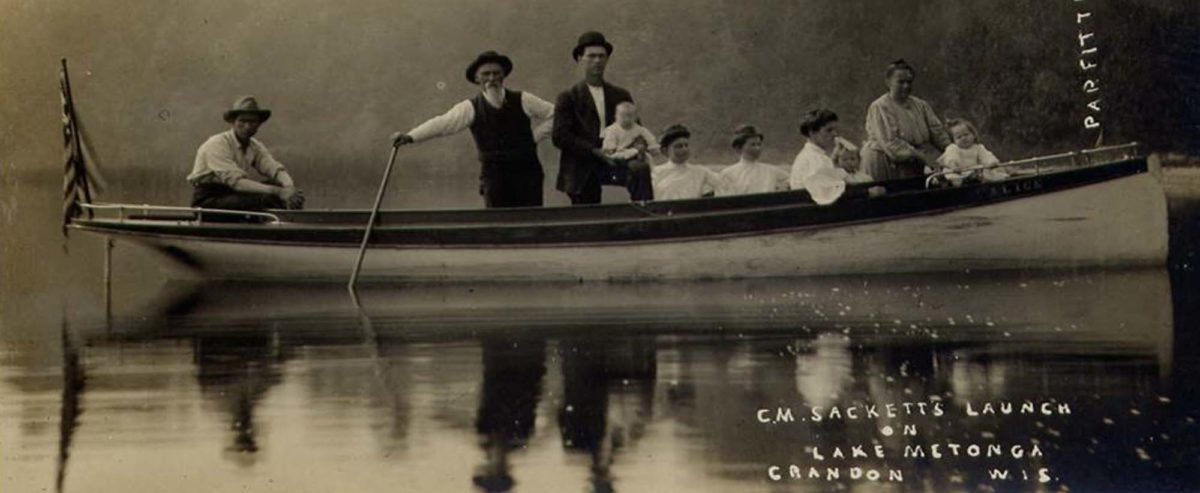
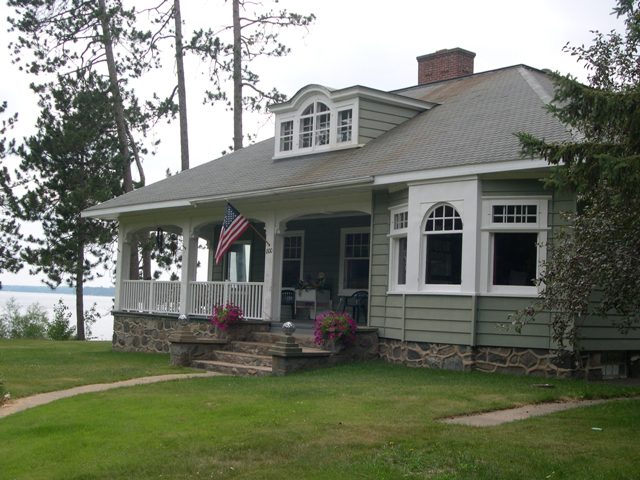
One thought on “Stories of Metonga: Part 3”